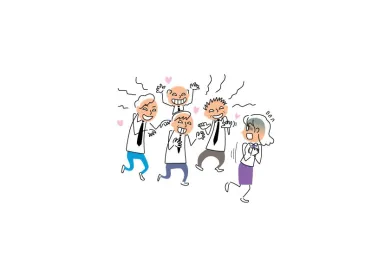On August 24, 2018, New York State launched a website called “Combating Sexual Harassment in the Workplace,” relating to the suite of sexual harassment laws passed earlier this year.[1] The website contains (i) a model sexual harassment policy; (ii) model training materials; (iii) a model complaint form; and (iv) Frequently Asked Questions(“FAQs”) relating to the policy, training materials, and other facets of the new laws, including (a) limits on non-disclosure provisions in settlement agreements relating to sexual harassment and (b) the prohibition of mandatory pre-dispute arbitration of sexual harassment claims.[2]
It should be noted that the model policy and complaint form are subject to public comment through September 12, 2018, at which point the comments will be assessed. The final versions of those materials are anticipated to go live in advance of October 9, 2018, when the policy and training requirements become effective.
Significantly, the FAQs set forth certain new and important requirements with respect to the timing of the annual harassment training—information that was not included in the law itself:
-
First, employers must complete the training of all current employees no later than January 1, 2019.
-
Second, beginning on January 1, 2019, all new hires must complete training within 30 calendar days of hire.
In addition to these new timing requirements, the FAQs and accompanying documents (collectively, “Guidance”) provide information on how to comply with the suite of sexual harassment prevention laws, as detailed below.
Model Sexual Harassment Policy
The State issued a seven-page draft model policy entitled “Sexual Harassment Policy for All Employers in New York State.” The model policy makes clear that it applies not only to a company’s employees but also to all paid and unpaid employees, interns, contractors, or persons who are in any way conducting business with the employer. Also of note, all managers and supervisors are now mandatory reporters, in that they are “required to report any complaint that they receive, or any harassment that they observe . . . .”
The model policy also suggests a process for investigations of alleged sexual harassment, which, as the policy suggests, should be completed within 30 days:
-
The manager or supervisor who has received the complaint will immediately review the allegations and take necessary immediate interim steps.
-
The manager or supervisor will ensure that there is a written complaint formfilled out, either by the employee or by the manager or supervisor receiving the complaint.
-
The employer must:
-
preserve, collect, and review all potentially pertinent records, such as “documents, emails or phone records”;
-
conduct interviews with the relevant parties and witnesses;
-
document the entire investigation, including:
-
all relevant documents reviewed (with a summary of what those documents contained),
-
names of people interviewed (with a summary of the results of those interviews),
-
a timeline,
-
a summary of prior relevant incidents, and
-
a final resolution to the investigation;
-
-
maintain the investigation-related documentation in the employer’s files;
-
inform the relevant parties of the results of the investigation and any consequences resulting from it; and
-
remind the complaining individual of his or her rights under state and federal law to pursue his or her complaint externally.
-
The State also issued a document entitled “Minimum Standards for Sexual Harassment Prevention Policies” for employers that do not want to simply adopt the State’s model policy, so that they are aware of the minimum requirements for harassment policies. Per this document, such an anti-sexual harassment policy must:
-
prohibit “sexual harassment,” as defined by the New York State Department of Labor (“DOL”) and the New York State Division of Human Rights (“DHR”);
-
provide examples of what would constitute sexual harassment;
-
include information regarding state and federal laws relating to sexual harassment, as well as the remedies provided to victims under those laws;
-
include a written complaint form (a model complaint form is also provided on the website);
-
include a procedure for sexual harassment investigations;
-
include information regarding all of the possible avenues for pursuing a charge of sexual harassment (including “administratively and judicially);
-
state clearly that employees who sexually harass (and supervisors and managers who ignore sexual harassment) are subject to sanctions; and
-
express clearly that retaliation is unlawful.
Training
As noted above, the FAQs impose new timing requirements with respect to training. First, employers must complete the training of all current employees no later than January 1, 2019. Note that this requirement may mean that employers in New York City will need to conduct additional training in 2019 in order to comply with the city’s upcoming training requirements, which become effective on April 1, 2019. Second, the FAQs now state that employers must complete training for new hires beginning employment after January 1, 2019, within 30 calendar days of hire.
Importantly, all employees in New York must be trained, including “temporary / transient employees” and employees who work “just one day” for the employer or “just one day” in New York.
The current model training document consists of a script for training but does not yet include the PowerPoint, video presentation, or FAQs to accompany the training, which are referenced in the model training document. Among other topics, the script for training, as currently drafted, defines “sexual harassment,” provides an overview of the types of sexual harassment (e.g., hostile environment and quid pro quo), and addresses how an employee can combat sexual harassment in the workplace. And among other recommendations, the Guidance states that training should be provided in the language(s) spoken by an employer’s employees and contain industry-specific examples of harassment.
Like the standards for a model policy drafted by the employer, the website also includes a draft of “Minimum Standards for Sexual Harassment Prevention Training” for employers that do not use the model training from the State. The training must:
-
be interactive,
-
include an explanation of sexual harassment consistent with guidance issued by the DOL in consultation with the DHR,
-
include examples of conduct that would constitute unlawful sexual harassment,
-
include information regarding the federal and state statutory provisions concerning sexual harassment and remedies available to victims of sexual harassment,
-
include information concerning employees’ rights of redress and all available forums for adjudicating complaints, and
-
include information addressing conduct by supervisors and any additional responsibilities for such supervisors.
According to the Guidance, in order to be considered “interactive,” the training may:
-
be web-based with questions asked of employees as part of the program,
-
accommodate questions asked by employees,
-
include a live trainer made available during the session to answer questions, and/or
-
require feedback from employees about the training and the materials presented.
Training large numbers of employees, who may be located in various workplaces or offices, requires tremendous resources and coordination. Employers can utilize Epstein Becker Green’s new anti-harassment e-learning course, “Halting Harassment,” to ensure compliance with the New York State training requirement. Click here for more information on this new e-learning solution.
Mandatory Arbitration
The FAQs also address New York Civil Practice Law and Rules (“CPLR”) § 7515, effective July 11, 2018, which prohibits the use of binding pre-dispute mandatory arbitration clauses as they relate to allegations of sexual harassment. The law applies to all employers (not just those with four or more employees). The FAQs clarify that a mandatory arbitration clause is a requirement in any written contract that (i) when faced with contract disputes, compels parties to seek arbitration before going to court and (ii) makes facts found at arbitration final and not subject to review by the courts. The FAQs also reiterate an exception to the rule prohibiting arbitration of harassment claims where such prohibition conflicts with the terms of a collective bargaining agreement. This means that if a grievance and arbitration provision of a collective bargaining agreement between the employer and the union representing its employees prohibits harassment and other forms of discrimination, and calls for the resolution of claims of harassment and discrimination through the process up to and through binding arbitration between the employer and the union, the FAQs recognize and confirm that such contract terms will be controlling and any such claims must be grieved and arbitrated under the collective bargaining agreement.
Nondisclosure Agreements
Effective July 11, 2018, two new provisions of New York law (New York General Obligations Law § 5-336 and New York CPLR § 5003-b) ban nondisclosure clauses in settlements, agreements, or other resolutions of sexual harassment claims, unless the condition of confidentiality is the complainant’s and/or the plaintiff’s preference.
If the complainant and/or the plaintiff prefers to include a confidentiality clause in a settlement or agreement, then the complainant/plaintiff will be provided with the nondisclosure term or condition provision in writing. The complainant/plaintiff will then have 21 days after receiving such term or condition to consider it. After the 21-day consideration period, the term or condition will be memorialized in an agreement that is executed by the parties. The complainant/plaintiff will then have seven days following the execution of such settlement or agreement to revoke the agreement. The confidentiality clause will not become effective or enforceable until the revocation period has expired.
The FAQs clarify that an employer may initiate the process by including a nondisclosure provision in such an agreement.
Further, and significantly, the FAQs state that the parties will need to enter into two separate documents to effectuate a nondisclosure agreement pertaining to the underlying facts related to an allegation of sexual harassment. In other words, the complainant/plaintiff must first agree to the non-disclosure provision in one agreement, and, then, the provisions of that first document relating to the confidentiality of sexual harassment allegations can be incorporated into a broader settlement agreement.
Based on the language of the law itself, it is unclear whether this nondisclosure agreement rule applies only to agreements settling actual claims/allegations of sexual harassment, or alternatively, to any agreement, including a general release of claims that contains a release of harassment claims (e.g., a general release of claims in connection with a reduction in force). However, the detailed procedure included in the FAQs, as well as the FAQs’ reference to the individual entering into the nondisclosure agreement as a “person who complained” appear to indicate that this requirement applies only to individuals who have actually made a complaint of harassment.
What New York Employers Should Do Now
-
Review New York State’s Guidance, including its model harassment policy and training program, which can be found here.
-
Review and revise, as necessary, policies regarding sexual harassment in the workplace to conform to the requirements of the new law pertaining to sexual harassment policies and include a complaint form.
-
Make sure that compliant sexual harassment training of all New York employees and managers is completed no later than January 1, 2019.
-
Prepare to provide such training on an annual basis.
-
Ensure that compliant sexual harassment training of all new employees is completed within 30 days of hire date, beginning on January 1, 2019.
-
Determine the language(s) in which training should be conducted.
-
Review any arbitration agreements or programs requiring the arbitration of sexual harassment claims to determine if any revisions are required on a going-forward basis.
-
Prepare agreements seeking confirmation that the confidentiality of facts and circumstances underlying harassment claims are, indeed, the preference of the complaining person. Such agreements must be reviewed for 21 days, and once the complaining person’s preference has been memorialized, the individual will have seven days to revoke such preference before such agreements can be included in a broader settlement document.
-
Train human resources professionals and internal legal counsel regarding all essential components of the new laws mentioned above.
-
Train human resources professionals and managers on the new New York State requirements regarding the applicability of the sexual harassment policy and protections to non-employees.
-
Consider commenting upon the model policy and complaint form. To the extent you wish to do so, those comments may be submitted here.
ENDNOTES
[1] The laws were passed as part of a budget initiative in April 2018. For additional information, please see Epstein Becker Green’s Act Now Advisory entitled “New York State Enacts Sweeping Sexual Harassment Laws.”
[2] These last two laws became effective July 11, 2018.






 />i
/>i

